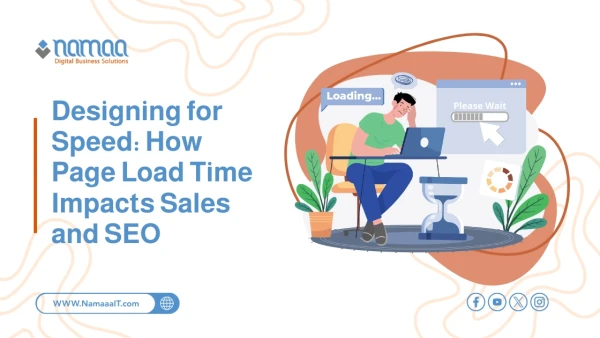Just having a website is not enough to get the most out of it.
The site must be designed and developed with the user as the top priority. This is where the importance of improving user experience (UX) becomes a decisive factor in the success of any corporate website—not just to attract visitors, but to convert them into loyal customers and achieve business goals.
Ignoring the importance of UX can lead to severe consequences, such as high bounce rates, low conversion rates, and a decline in search engine rankings. Search engines like Google aim to deliver the best and most relevant results to users, giving priority to websites that offer excellent user experiences.
What is User Experience (UX)?
Before diving into the importance of improving UX, let’s define the term.
User Experience (UX) refers to all aspects of how a user interacts with a product or service. It includes multiple dimensions such as:
- Usability: How easy it is to navigate the website and find the needed information.
- Accessibility: How effectively all users, including people with disabilities, can use the website.
- Desirability: How attractive the design and visual elements are, encouraging user interaction.
- Credibility: How much trust the user has in the content and information on the website.
- Value: How well the website meets the user's needs and provides real value.
- Efficiency: How quickly a user can accomplish their tasks on the site.
- In simple terms, a good UX means that visitors find your website easy to navigate, fast to load, visually appealing, and helpful.
The Importance of Improving UX on Corporate Websites
How does UX improvement impact SEO?
This is one of the key questions that link UX and SEO. Their relationship is strong and increasingly vital. Google and other search engines understand the significance of UX and consider it a major factor in ranking websites:
- Reducing Bounce Rate: When users visit your site and leave quickly without engaging, it sends a negative signal to Google. A good UX encourages users to stay longer and explore more pages, reducing bounce rates.
- Increasing Dwell Time: The longer users stay on your website, the more valuable and relevant your content appears to search engines, boosting your ranking. Improving UX ensures content is engaging and easy to consume.
- More Pages per Session: A well-designed UX encourages users to explore more pages, increasing the average pages viewed per session.
- User Signals: Google increasingly relies on user behavior signals to evaluate website quality, including bounce rate, dwell time, and click-through rate (CTR). Enhancing UX positively affects all these metrics.
- Core Web Vitals (CWV): These metrics (LCP, FID, CLS) are part of Google’s ranking factors. They measure the loading speed of main content, interactivity, and visual stability—all crucial UX elements.
- Mobile-Friendliness: With the rise of mobile usage, responsive website design is essential. Google prioritizes mobile-friendly sites, making this a core aspect of good UX.
UX vs. UI: What's the Difference?
People often confuse User Experience (UX) with User Interface (UI), though they are closely related but distinct:
- UI (User Interface): Refers to the visual and interactive components of a site—colors, fonts, buttons, images, and layout. It focuses on making the website visually appealing and easy to interact with.
- UX (User Experience): Is the overall experience during interaction with the website. UX is the umbrella concept, and UI is a part of it. UX design focuses on understanding user needs and behaviors to create smooth, logical journeys.
Think of it this way:
The UI is the car’s look and dashboard design.
The UX is how you feel while driving—is it comfortable, easy to handle, enjoyable?
How to Measure UX Effectively
You can’t improve what you can’t measure. To properly evaluate the impact of UX, use specific tools and methods:
- Google Analytics: Provides data on bounce rate, average session duration, pages per session, and conversion paths. Analyzing this helps identify weak points on your site.
- Heatmaps & Session Recordings: Tools like Hotjar or Crazy Egg show where users click, how far they scroll, and how they move across pages. Session recordings let you watch real user interactions.
- Usability Testing: Involves observing real users as they try to complete specific tasks on your website. These tests often reveal issues that wouldn’t surface otherwise.
- Surveys and Feedback Forms: Asking users directly about their experience gives valuable insight into what they like or dislike.
- A/B Testing: Lets you compare two versions of a webpage or element to see which performs better in terms of UX and conversions.
- Competitor Analysis: Studying competitors with strong UX can inspire ideas to improve your own site.
Through these measurements, you can identify areas for improvement, apply changes, and then evaluate the results—creating a continuous improvement cycle.
read more: Top 10 Features Your Company Website Must Have
Key Elements of a Good UX on Corporate Websites
To implement the importance of UX improvement in real life, focus on several essential elements:
- Clear and Simple Design: Avoid visual clutter and unnecessary elements. A clean, organized layout helps users find what they need quickly.
- Intuitive Navigation: Menus and navigation should be logical and clear. Users should always know where they are and how to get to other sections.
- Fast Loading Speed: Users hate waiting. Slow pages increase bounce rates. Optimize images, enable caching, and minimize unnecessary JavaScript and CSS.
- Responsive Design: Your website must work flawlessly across all devices (desktop, mobile, tablet).
- High-Quality, Readable Content: Your content should be useful, relevant to your audience, and easy to read. Use clear headings, short paragraphs, bullet points, and visuals to support your message.
- Clear Calls-to-Action (CTAs): Buttons and links like “Buy Now,” “Contact Us,” or “Sign Up Free” should be prominent and easy to identify.
- Accessibility: Design your site to be usable by people with disabilities (e.g., alt text for images, good color contrast, keyboard navigation).
- Security and Trust: Use SSL (HTTPS), clearly display privacy policies and terms, and show trust badges to build credibility.
Summary
✅ UX improvements directly affect Google rankings. A poor user experience can increase bounce rates by over 50%, hurting your SEO.
✅ A well-designed UX can boost conversions (sales, lead sign-ups) by 200–400%. Every $1 invested in UX can return up to $100 in value.
✅ 88% of users are less likely to return to a website after a bad experience, proving the importance of making a strong first impression.
✅ Over 50% of internet traffic is from mobile devices. Ensuring your site loads in under 3 seconds on mobile is key to retaining most visitors.
✅ Investing in UX can reduce customer support costs by 25% or more, by minimizing user issues and improving clarity and usability.

 on Corporate Websites (1).webp)







